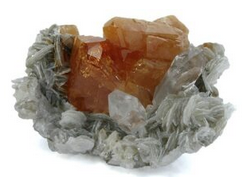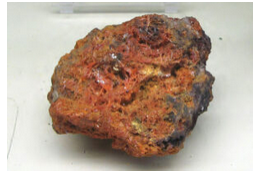14.10: Tungstates, Molybdates, and Chromates
- Page ID
- 18683
\( \newcommand{\vecs}[1]{\overset { \scriptstyle \rightharpoonup} {\mathbf{#1}} } \)
\( \newcommand{\vecd}[1]{\overset{-\!-\!\rightharpoonup}{\vphantom{a}\smash {#1}}} \)
\( \newcommand{\dsum}{\displaystyle\sum\limits} \)
\( \newcommand{\dint}{\displaystyle\int\limits} \)
\( \newcommand{\dlim}{\displaystyle\lim\limits} \)
\( \newcommand{\id}{\mathrm{id}}\) \( \newcommand{\Span}{\mathrm{span}}\)
( \newcommand{\kernel}{\mathrm{null}\,}\) \( \newcommand{\range}{\mathrm{range}\,}\)
\( \newcommand{\RealPart}{\mathrm{Re}}\) \( \newcommand{\ImaginaryPart}{\mathrm{Im}}\)
\( \newcommand{\Argument}{\mathrm{Arg}}\) \( \newcommand{\norm}[1]{\| #1 \|}\)
\( \newcommand{\inner}[2]{\langle #1, #2 \rangle}\)
\( \newcommand{\Span}{\mathrm{span}}\)
\( \newcommand{\id}{\mathrm{id}}\)
\( \newcommand{\Span}{\mathrm{span}}\)
\( \newcommand{\kernel}{\mathrm{null}\,}\)
\( \newcommand{\range}{\mathrm{range}\,}\)
\( \newcommand{\RealPart}{\mathrm{Re}}\)
\( \newcommand{\ImaginaryPart}{\mathrm{Im}}\)
\( \newcommand{\Argument}{\mathrm{Arg}}\)
\( \newcommand{\norm}[1]{\| #1 \|}\)
\( \newcommand{\inner}[2]{\langle #1, #2 \rangle}\)
\( \newcommand{\Span}{\mathrm{span}}\) \( \newcommand{\AA}{\unicode[.8,0]{x212B}}\)
\( \newcommand{\vectorA}[1]{\vec{#1}} % arrow\)
\( \newcommand{\vectorAt}[1]{\vec{\text{#1}}} % arrow\)
\( \newcommand{\vectorB}[1]{\overset { \scriptstyle \rightharpoonup} {\mathbf{#1}} } \)
\( \newcommand{\vectorC}[1]{\textbf{#1}} \)
\( \newcommand{\vectorD}[1]{\overrightarrow{#1}} \)
\( \newcommand{\vectorDt}[1]{\overrightarrow{\text{#1}}} \)
\( \newcommand{\vectE}[1]{\overset{-\!-\!\rightharpoonup}{\vphantom{a}\smash{\mathbf {#1}}}} \)
\( \newcommand{\vecs}[1]{\overset { \scriptstyle \rightharpoonup} {\mathbf{#1}} } \)
\( \newcommand{\vecd}[1]{\overset{-\!-\!\rightharpoonup}{\vphantom{a}\smash {#1}}} \)
\(\newcommand{\avec}{\mathbf a}\) \(\newcommand{\bvec}{\mathbf b}\) \(\newcommand{\cvec}{\mathbf c}\) \(\newcommand{\dvec}{\mathbf d}\) \(\newcommand{\dtil}{\widetilde{\mathbf d}}\) \(\newcommand{\evec}{\mathbf e}\) \(\newcommand{\fvec}{\mathbf f}\) \(\newcommand{\nvec}{\mathbf n}\) \(\newcommand{\pvec}{\mathbf p}\) \(\newcommand{\qvec}{\mathbf q}\) \(\newcommand{\svec}{\mathbf s}\) \(\newcommand{\tvec}{\mathbf t}\) \(\newcommand{\uvec}{\mathbf u}\) \(\newcommand{\vvec}{\mathbf v}\) \(\newcommand{\wvec}{\mathbf w}\) \(\newcommand{\xvec}{\mathbf x}\) \(\newcommand{\yvec}{\mathbf y}\) \(\newcommand{\zvec}{\mathbf z}\) \(\newcommand{\rvec}{\mathbf r}\) \(\newcommand{\mvec}{\mathbf m}\) \(\newcommand{\zerovec}{\mathbf 0}\) \(\newcommand{\onevec}{\mathbf 1}\) \(\newcommand{\real}{\mathbb R}\) \(\newcommand{\twovec}[2]{\left[\begin{array}{r}#1 \\ #2 \end{array}\right]}\) \(\newcommand{\ctwovec}[2]{\left[\begin{array}{c}#1 \\ #2 \end{array}\right]}\) \(\newcommand{\threevec}[3]{\left[\begin{array}{r}#1 \\ #2 \\ #3 \end{array}\right]}\) \(\newcommand{\cthreevec}[3]{\left[\begin{array}{c}#1 \\ #2 \\ #3 \end{array}\right]}\) \(\newcommand{\fourvec}[4]{\left[\begin{array}{r}#1 \\ #2 \\ #3 \\ #4 \end{array}\right]}\) \(\newcommand{\cfourvec}[4]{\left[\begin{array}{c}#1 \\ #2 \\ #3 \\ #4 \end{array}\right]}\) \(\newcommand{\fivevec}[5]{\left[\begin{array}{r}#1 \\ #2 \\ #3 \\ #4 \\ #5 \\ \end{array}\right]}\) \(\newcommand{\cfivevec}[5]{\left[\begin{array}{c}#1 \\ #2 \\ #3 \\ #4 \\ #5 \\ \end{array}\right]}\) \(\newcommand{\mattwo}[4]{\left[\begin{array}{rr}#1 \amp #2 \\ #3 \amp #4 \\ \end{array}\right]}\) \(\newcommand{\laspan}[1]{\text{Span}\{#1\}}\) \(\newcommand{\bcal}{\cal B}\) \(\newcommand{\ccal}{\cal C}\) \(\newcommand{\scal}{\cal S}\) \(\newcommand{\wcal}{\cal W}\) \(\newcommand{\ecal}{\cal E}\) \(\newcommand{\coords}[2]{\left\{#1\right\}_{#2}}\) \(\newcommand{\gray}[1]{\color{gray}{#1}}\) \(\newcommand{\lgray}[1]{\color{lightgray}{#1}}\) \(\newcommand{\rank}{\operatorname{rank}}\) \(\newcommand{\row}{\text{Row}}\) \(\newcommand{\col}{\text{Col}}\) \(\renewcommand{\row}{\text{Row}}\) \(\newcommand{\nul}{\text{Nul}}\) \(\newcommand{\var}{\text{Var}}\) \(\newcommand{\corr}{\text{corr}}\) \(\newcommand{\len}[1]{\left|#1\right|}\) \(\newcommand{\bbar}{\overline{\bvec}}\) \(\newcommand{\bhat}{\widehat{\bvec}}\) \(\newcommand{\bperp}{\bvec^\perp}\) \(\newcommand{\xhat}{\widehat{\xvec}}\) \(\newcommand{\vhat}{\widehat{\vvec}}\) \(\newcommand{\uhat}{\widehat{\uvec}}\) \(\newcommand{\what}{\widehat{\wvec}}\) \(\newcommand{\Sighat}{\widehat{\Sigma}}\) \(\newcommand{\lt}{<}\) \(\newcommand{\gt}{>}\) \(\newcommand{\amp}{&}\) \(\definecolor{fillinmathshade}{gray}{0.9}\)wolframite series
huebnerite MnWO4
ferberite FeWO4
others
scheelite CaWO4
wulfenite PbMoO4
crocoite PbCrO4
Tungstates, molybdates, and chromates are chemically and structurally related to the anhydrous sulfates.
Generally rare, these minerals may be locally concentrated in ore deposits. Wolframite is the most common tungsten ore mineral. Scheelite, too, is an important tungsten ore mineral. Wulfenite is a minor molybdenum ore mineral. Crocoite is a minor secondary mineral sometimes found with other lead ore minerals.
Wolframite (Fe,Mn)WO4
Origin of Name
The name’s origin is unclear; perhaps it comes from the German words for “wolf” and rahm, meaning “soot,” in reference to its color. Wolframite is not a single mineral species, but is a solid solution series between end members ferberite and huebnerite.

Hand Specimen Identification
Very high specific gravity, dark color, and one good cleavage help identify wolframite. It is sometimes confused with hornblende but is much heavier. It is occasionally confused with scheelite or other heavy dark-colored minerals. Figure 14.422 shows a typical example of black wolframite. It is perched on top of clear quartz and orangish calcite.
Physical Properties
| hardness | 4 to 4.5 |
| specific gravity | 7.25 to 7.60 |
| cleavage/fracture | one perfect (010)/uneven |
| luster/transparency | submetallic/opaque unless very thin color black, red-brown |
| color | brownish black or iron black |
| streak | black, red-brown |
Properties in Thin Section
Wolframite is generally opaque. Biaxial (+), α = 2.17 to 2.31 , β = 2.22 to 2.40, γ = 2.30 to 2.46, δ = 0.13 to 0.15, 2V = 73° to 79°.
Crystallography
Wolframite is monoclinic, a = 4.71 to 4.85, = 5.70 to 5.77, c = 4.94 to 4.98, b = 90° to 91°, Z = 2; space group \(P\dfrac{2}{c}\); point group \(\dfrac{2}{m}\).
Habit
Wolframite crystals are short to long prisms or tabs, often showing vertical striations. Wolframite may form bladed, subparallel crystal groups.
Structure and Composition
A complete solid solution exists between ferberite (FeWO4) and huebnerite (MnWO4), the two principal wolframite end members. The basic structure consists of layers of distorted (WO4)2- tetrahedra joined by octahedral Fe or Mn.
Occurrence and Associations
Wolframite is a rare mineral. Usually found in high-temperature quartz veins associated with granitic igneous rocks, it is, however, the most important tungsten ore mineral. It is also found in sulfide-rich veins, associated with scheelite, cassiterite, pyrite, or galena. It may contain minor amounts of Ca, Mg, or rare earth elements.
Related Minerals
Similar minerals include the rare tungstates sanmartinite, (Zn,Fe)WO4, and raspite, PbWO4.
Scheelite CaWO4
Origin of Name
Named after K. W. Scheele (1742–1786), a Swedish chemist.

Hand Specimen Identification
High specific gravity, crystal habit, distinct cleavage, and fluorescence under ultraviolet light are characteristic for scheelite. It may be confused with quartz or feldspar when uncolored.
Figure 14.423 shows scheelite crystals, with sheelite‘s classic orange diagnostic color, on quartz and muscovite. Scheelite, however, may have other hues.
Physical Properties
| hardness | 4.5 to 5 |
| specific gravity | 6.11 |
| cleavage/fracture | good pyramidal {101}, poor {112}/uneven |
| luster/transparency | subadamantine/transparent to translucent |
| color | tan, orange, brown, yellow, white, or colorless |
| streak | white |
Properties in Thin Section
Scheelite is uniaxial (+), ω = 1.920, ε = 1.934, δ = 0.014.
Crystallography
Scheelite is tetragonal, a = 5.25, c = 11.40, Z = 4; space group \(I\dfrac{4_1}{a}\); point group \(\dfrac{4}{m}\).
Habit
Scheelite is found in massive, columnar, or granular aggregates and as individual crystals, usually dipyramids.
Structure and Composition
Scheelite is usually close to end-member composition, but a limited solid solution exists with powellite, CaMoO4. It may also incorporate small amounts of Cu or Mn. In the structure, isolated (WO4)2- tetrahedra are linked by 8-coordinated Ca.
Occurrence and Associations
Scheelite is a high-temperature mineral found in metamorphic aureoles, in granites and pegmatites, and in some hydrothermal veins. It may be found with cassiterite, SnO2; topaz, Al2SiO4(F,OH)2; fluorite, CaF2; apatite, Ca5(PO4)3(OH,F,Cl); and with other tungstates or molybdates.
Related Minerals
Scheelite is isostructural with wulfenite, PbMoO4.
Wulfenite PbMoO4
Origin of Name
Named after Austrian mineralogist F. X. von Wulfen (1728–1805).


Hand Specimen Identification
Crystal habit and orange-yellow color are distinctive. Wulfenite is occasionally confused with native sulfur but has much greater density.
Figure 14.424 shows a specimen of wulfenite from southern Arizona. Figure 14.425 is a photo of a display case with a dozen samples from different places. The orange to yellow-orange color, although a bit variable, is a key to identifying this mineral.
Physical Properties
| hardness | 3 |
| specific gravity | 6.7 to 7.0 |
| cleavage/fracture | good but rarely seen pyramidal {011}, poor (001)/ subconchoidal |
| luster/transparency | adamantine, silvery/ transparent to translucent |
| color | yellow, orange, red, brown, green |
| streak | white |
Optical Properties
Wulfenite is uniaxial (-), ω = 2.404, ε = 2.283, δ = 0.121.
Crystallography
Wulfenite is tetragonal, a = 5.42, c = 12.10, Z = 4; space group \(I\dfrac{4_1}{a}\); point group \(\dfrac{4}{m}\).
Habit
Wulfenite crystals are most often square tablets, often thin or pyramidal. They may also be prismatic.
Occurrence and Associations
Wulfenite is a rare secondary mineral found in the oxidized portions of Pb deposits. It may be associated with galena, PbS; cerussite, PbCO3; vanadinite, Pb5(VO4)3Cl; or pyromorphite, Pb5Cl(PO4)3. Wulfenite is isostructural with scheelite, CaWO4, with which it forms limited solid solutions. It also forms limited solid solutions with powellite, CaMoO4, and raspite, PbWO4.
Crocoite PbCrO4
Origin of Name
From the Greek word krokos, meaning “saffron,” referring to its color.


Hand Specimen Identification
Distinctive reddish-orange color and adamantine luster, its high specific gravity and habit, and association with other Pb-minerals usually make crocoite easy to identify. It is occasionally confused with wulfenite, PbMoO4, or with vanadinite, Pb5(VO4)3Cl, both of which may have strong red or orange colors.
Figure 14.426 shows crocoite on goethite from Australia. Figure 14.427 shows crocoite from the Ural Mountains, Russia. See also the photo of crocoite with pyromorphite and galena in Figure 14.433.
Physical Properties
| hardness | 2.5 to 3 |
| specific gravity | 6.0 |
| cleavage/fracture | perfect {110}, poor (001)/subconchoidal |
| luster/transparency | adamantine/translucent |
| color | reddish orange |
| streak | orange |
Optical Properties
Crocoite is biaxial (+), α = 2.31 , β = 2.37, γ = 2.66, δ = 0.35, 2V = 54°.
Crystallography
Crocoite is monoclinic, a = 7.11, b = 7.41, c = 6.81, β = 102.55°, Z = 4; space group \(P\dfrac{2_1}{n}\); point group \(\dfrac{2}{m}\).
Habit
Crocoite crystals are generally acicular or columnar. The thin prismatic crystals often have striations parallel to prism faces. More rarely, crocoite forms granular aggregates or patches.
Structure and Composition
Crocoite is isostructural with monazite, (Ce,La,Th,Y)PO4. It consists of distorted (CrO4)2- tetrahedra alternating with Pb in 9-fold coordination.
Occurrence and Associations
Crocoite is a rare secondary Pb mineral associated with veined lead deposits. It may be found with cerussite, PbCO3; pyromorphite, Pb(PO4)3Cl; or wulfenite, PbMoO4.
Related Minerals
Crocoite is isostructural with monazite, (Ce,La,Th,Y)PO4, and with several other rare earth silicates and phosphates. It is closely related to xenotime, YPO4, and pucherite, BiVO4.


